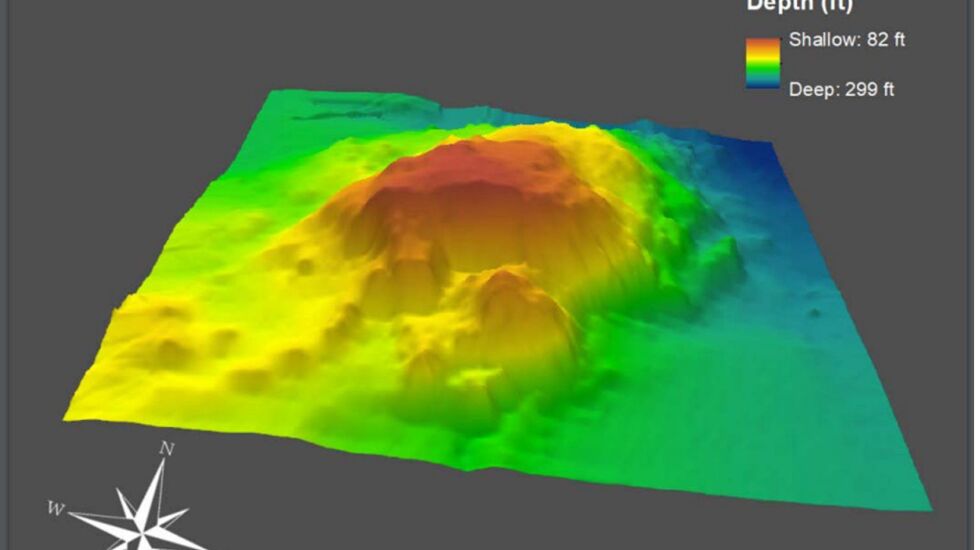
Julian’s Reef, that protrusion on the Lake Michigan floor off Lake Forest and Highland Park, has been the primary stocking site for lake trout in Illinois waters since 1981.
Around 2009-11, increased findings of wild lakers began, said William Stacy-Duffy, aquatic ecologist with the Illinois Natural History Survey at the Lake Michigan Biological Station in Zion. Over the past decade, Illinois has highest proportion of wild lakers lakewide on Lake Michigan, something anglers do not find surprising.
Stacy-Duffy led off the Lake Michigan Fisheries Seminar last Wednesday at Whiting Public Library in Indiana, with “Lake Trout Sampling and Offshore Reef Mapping.” After a three-year hiatus, these seminars by the Illinois-Indiana Sea Grant returned and were, like many things post-pandemic, a mix of in-person and online.
I was most interested in the reef mapping, which I find fascinating with the use of side scan sonar and GoPro cameras. So far, bathymetric maps (mapping of the floor) for seven reefs are made, including in 3D.
Reefs are spawning sites for lakers, once the top predator on Lake Michigan.
“Reefs have large piles of boulders and cobble with nooks and crannies,” Stacy-Duffy said. “Those crevices are where eggs can be deposited and protected but still have oxygen flow.”
The reefs are fractured bedrock. But an added feature is the shells of invasive quagga mussels that now cover many areas.
“Dead mussel shells are becoming a key part of the bottom of the lake and fill crevices of rocks,” he noted.
That could be problematic to eggs reaching the crevices. There’s so many shells that currents appear to sweep them into piles.
Lakers are most commonly observed. Interestingly, a good number of lake whitefish were observed foraging around a pile of mussel shells at Gumby Reef and a large school of big freshwater drum enjoyed following the camera at Wilmette Reef. Invasive round gobies were also commonly observed.
The mapped reefs so far are Gumby, Julian’s, North, Lake Bluff 10-mile, Lake Bluff 18-mile, Waukegan and Wilmette.
For the reef maps, go to ifishillinois.org, then Places to Fish, then Lake Michigan, then Fish Habitat.
- Ben Dickinson, Lake Michigan fisheries biologist for Indiana, said during his update that he would like to receive more winter steelhead heads at the Michigan City DNR office from anglers of Salt Creek and the Little Cal.
Chinook
In a lakewide shift on Lake Michigan, both Illinois and Indiana plan to increase their stockings of Chinook next year. Indiana will up theirs by 50,000 to 275,000 and Illinois by 30,000 to 210,000.
Illinois deer hunting
I’m curious what weather might have done to harvest totals for the first portion of firearm deer season. When those numbers come, I will post at chicago.suntimes.com/outdoors.
Wild things
Notable movement of sandhill cranes through the Chicago area Friday and Saturday, with multiple reports of whooping cranes. Doug Stotz, senior conservation ecologist at the Field Museum, tweeted that there were at least nine reports with total of 17 whooping cranes with the thousands of sandhills.
Not surprisingly, the count at Jasper-Pulaski Fish and Wildlife Area in Indiana was at 31,975, near the all-time high.
Stray cast
The Bears season feels like planning a Boundary Waters trip without remembering the days it rains or the wind howls in your face paddling the length of a lake.







